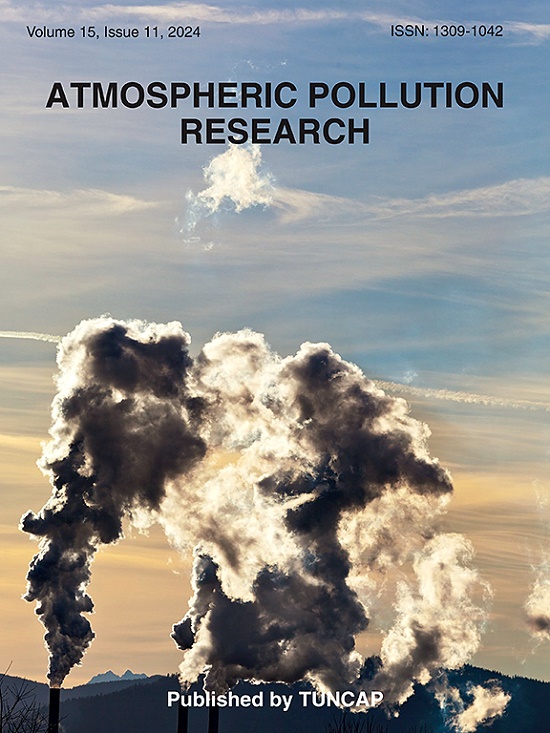Personal exposure and internal dose to particulate matter in a Mediterranean coastal city
IF 3.5
3区 环境科学与生态学
Q2 ENVIRONMENTAL SCIENCES
引用次数: 0
Abstract
The direct method of personal monitoring was selected with the aim to estimate the exposure and the subsequent dose of residents a coastal Mediterranean city (Chania Greece), to ambient particles. Eight subjects conducted daily real-time measurements, for 3 days each, with the use of an optical particle sizer. The subjects kept a diary of activities and of the microenvironments they visited. Additionally, a time resolution of 1 min was selected, in order to study the impact of various activities and indoor sources on human exposure and consequently on the human dose. The highest personal mean exposure in particle number concentration (PN0.3-10) was 80 particles/cm3, with average daily exposure 50 ± 16 particles/cm3, while the highest particle mass (PM10) daily exposure was 36.1 μg/m3 with average PM10 exposure concentration 18.7 ± 8.07 μg/m3. The impact of various activities on the indoor concentrations was also studied, with cooking resulting in sharp elevations in particle concentration, while other household activities also impacted the particles levels. Additionally, the dosimetry model, ExDoM2, was used to calculate the deposition and dose for both PN0.3-10 and PM10. The retention of PM10 in the respiratory tract, the mass transferred to the oesophagus, and their absorption to blood was also estimated. The model results indicated that the highest PM10 dose occurred in the extrathoracic region (ET) of the respiratory tract (RT) and after the 3 days of exposure, the highest amount of particles was transferred to the oesophagus.
地中海沿海城市个人对颗粒物的暴露和内部剂量
选择个人监测的直接方法,目的是估计地中海沿海城市(希腊哈尼亚)居民对环境颗粒的暴露和随后的剂量。8名受试者每天使用光学粒度仪进行实时测量,每次3天。受试者将活动和他们所访问的微环境记录下来。此外,选择1分钟的时间分辨率,以研究各种活动和室内源对人体暴露的影响,从而对人体剂量的影响。颗粒物数浓度(pn0.3 ~ 10)个人平均暴露量最高为80粒/cm3,日平均暴露量为50±16粒/cm3;颗粒物质量(PM10)日最高暴露量为36.1 μg/m3,日平均暴露浓度为18.7±8.07 μg/m3。还研究了各种活动对室内浓度的影响,烹饪导致颗粒浓度急剧上升,而其他家庭活动也影响颗粒水平。此外,使用剂量学模型ExDoM2计算PN0.3-10和PM10的沉积和剂量。PM10在呼吸道的滞留、转移到食道的质量以及它们在血液中的吸收也被估计。模型结果显示,PM10的最高剂量发生在呼吸道的胸外区(ET),暴露3天后,颗粒转移到食道的量最高。
本文章由计算机程序翻译,如有差异,请以英文原文为准。
求助全文
约1分钟内获得全文
求助全文
来源期刊

Atmospheric Pollution Research
ENVIRONMENTAL SCIENCES-
CiteScore
8.30
自引率
6.70%
发文量
256
审稿时长
36 days
期刊介绍:
Atmospheric Pollution Research (APR) is an international journal designed for the publication of articles on air pollution. Papers should present novel experimental results, theory and modeling of air pollution on local, regional, or global scales. Areas covered are research on inorganic, organic, and persistent organic air pollutants, air quality monitoring, air quality management, atmospheric dispersion and transport, air-surface (soil, water, and vegetation) exchange of pollutants, dry and wet deposition, indoor air quality, exposure assessment, health effects, satellite measurements, natural emissions, atmospheric chemistry, greenhouse gases, and effects on climate change.
 求助内容:
求助内容: 应助结果提醒方式:
应助结果提醒方式:


